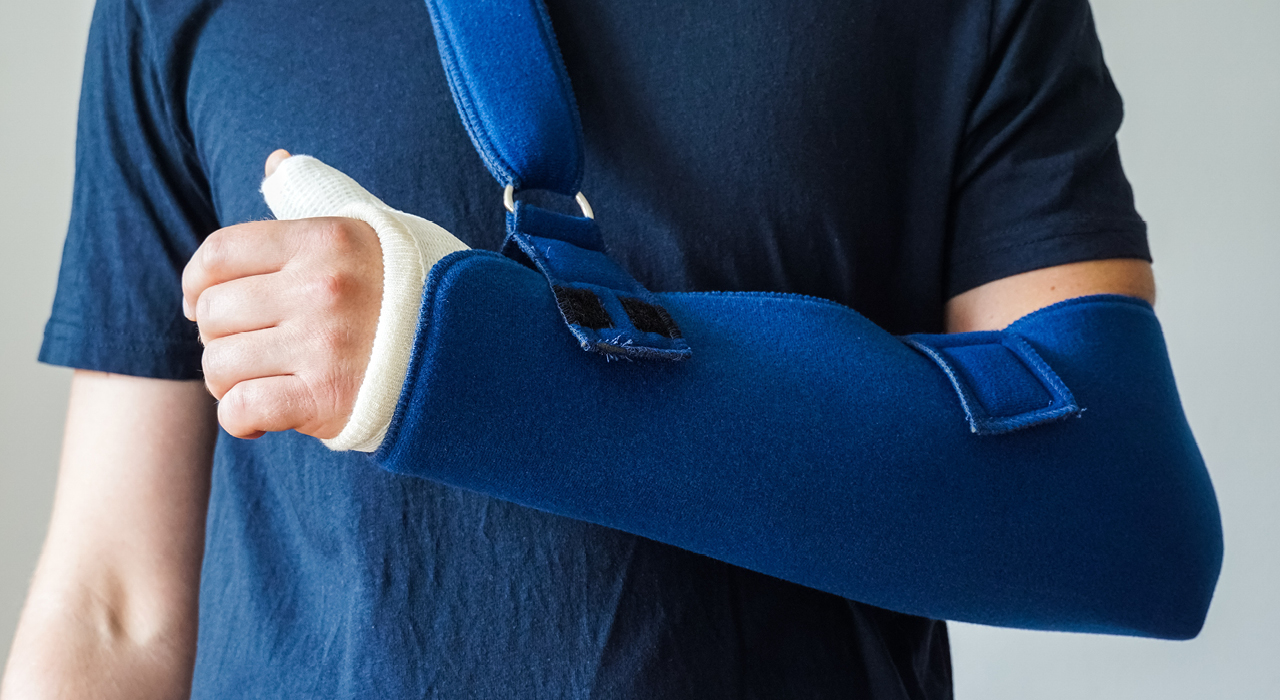Carpal tunnel syndrome is a condition where the median nerve in the wrist is pinched or compressed, causing numbness, tingling and pain.
Carpal tunnel at work
It is possible to treat carpal tunnel syndrome but when left unchecked, it can cause permanent, disruptive problems. There’s no scientific evidence to suggest that carpal tunnel syndrome is caused by using a computer, but many people believe their symptoms become worse while typing or using a mouse. Luckily, there are some simple steps we can take to keep our arms, wrists and hands effectively supported while we work.
What is the carpal tunnel?
The carpal tunnel is a narrow passageway in the wrist made up of tendons, ligaments and bones. Its job is to house the median nerve, which runs from the wrist to the hand and provides sensation to the thumb, index finger, middle finger and half of your ring finger.
The versatility of the human hand is one of the key features that sets us apart from other animals on the planet. The hand’s complex network of bones, tendons, ligaments and muscles evolved over many years to give us a strong grip - ideal for swinging clubs at enemies, whilst retaining the precision to manipulate small objects - perfect for crafting tools. These two traits, along with our intelligent brains, allowed us to rise up the food chain and build the advanced civilization we live in today.
Thanks to our median nerve, and the protective casing of the carpal tunnel, we are able to feel and make sense of the world around us.

Did you know...

There are 10 bones in the wrist and 27 in the hand

There are 0 muscles in the fingers - they are controlled by muscles in the palm and forearm

Hands are unique to the 300 species of primate on earth

Carpal tunnel syndrome is most common in women aged 40-60

What is carpal tunnel syndrome?
Carpal tunnel syndrome is a condition caused by the pinching or compression of the median nerve, which is the nerve that supplies sensation to a large portion of the hand. The condition is characterised by a collection of symptoms including tingling, pain and numbness in the hand and forearm.
Carpal tunnel syndrome is reasonably common and has a range of causes that may or may not be related to occupation. However, it is commonly reported amongst workers required to do a great deal of bending and straightening of the wrist, and those who use vibrating power tools.
Carpal tunnel symptoms
The main carpal tunnel symptoms are:
Numb hands
Tingling sensation

Pain in hand and wrist, which can spread up forearm, upper arm and shoulder

Muscle weakness

Difficulty gripping
Over time carpal tunnel symptoms can get worse, to the extent that it impacts your ability to carry out day-to-day tasks. It can also affect the quality of your sleep. In fact, symptoms are often first noticed at night because many people sleep with their wrists bent or compressed.
In severe cases, untreated carpal tunnel syndrome can lead to poor grip strength, loss of function (especially the thumb’s ability to pinch) and permanent muscle damage.
If you are experiencing carpal tunnel symptoms, it’s important to seek advice and treatment from your GP as soon as possible.

Carpal tunnel causes
There is no one single cause of carpal tunnel syndrome. The median nerve is highly sensitive to pressure so it’s often difficult to pinpoint the exact activity that causes the symptoms.
It’s thought that some people are more likely to develop carpal tunnel syndrome than others, especially if they:

Have any kind of arthritis in the wrist

Are pregnant - hormonal changes can affect connective tissues

Have an underactive thyroid gland

Have diabetes

Have a fractured wrist

Are taking medications

Have a job that involves heavy use of the wrist, or the use of vibrating tools

Carpal tunnel treatment
Go to your GP if you experience any symptoms of carpal tunnel syndrome. The sooner you have it diagnosed, the sooner you can work towards being pain-free and back to normal.
Your GP will examine your wrist and hand to determine the cause of your symptoms. They’ll be looking for signs of swelling, muscle wastage and levels of sensitivity.
If carpal tunnel syndrome is diagnosed by your GP, there are a number of different treatments possible. Some cases will even improve without medical intervention.
If deemed necessary, your doctor may advise one or more of the following carpal tunnel syndrome treatments:
A resting splint for your wrist at night
A working splint for certain activities
Wrist exercises
Drugs - steroid injections
Surgery - releases pressure on the nerve
Self-help - a healthy, balanced diet and regular exercise
Scientists are still trying to find out more about carpal tunnel syndrome - particularly how it can be prevented in workplaces. Alternative treatments such as therapeutic ultrasound and acupuncture are currently being investigated.
FAQ Show all answers
-
Is carpal tunnel caused by mouse and keyboard use?
Many of the office workers we encounter feel that their computer mice or keyboards may be to blame for their carpal tunnel issues. While empirical evidence does suggest that repetitively using the wrist in awkward ways may increase the risk of developing carpal tunnel syndrome, there is no conclusive evidence to suggest that computer work is a cause.
However, that should not stop you from taking efforts to set your workstation up properly to minimise your risk of musculoskeletal discomfort.
-
Is carpal tunnel a disability?
As with all health issues, whether or not carpal tunnel syndrome is considered to be a disability depends on the severity of the symptoms and the impact they have on the sufferer’s life.
If carpal tunnel syndrome impairs a person’s everyday activities at work, then their employer may be required to make reasonable adjustments under The Equality Act 2010.
Talk to your line manager, or contact your local job centre who can put you in touch with a Disability Employment Adviser. They will be able to advise on reasonable adjustments, such as equipment changes and working techniques.
-
What is the best computer mouse for carpal tunnel syndrome?
We would never claim that a particular computer mouse can completely prevent or cure carpal tunnel syndrome. All we can do is recommend products that reduce the amount of grip needed for use. Vertical mice, for instance, are used in the neutral hand-shake position to activate the larger shoulder muscles rather than overusing the hand. Some people find these more comfortable to use.
Our most popular vertical mice:
-
Is there anything I can do for carpal tunnel relief?
Apart from following your GP’s advice, there are a few things you can do to try to relieve your carpal tunnel symptoms - especially if you spend most of your day behind a desk.
- Do regular wrist exercises
- Take frequent standing or walking breaks away from your desk
- Book a DSE assessment to identify improvements to set-up and equipment
Want more information?
Our DSE experts are always on-hand to help you.
Contact us
To request more information or to seek 'no obligation' advice, please contact our experienced customer services team on +44 (0) 345 345 0010 or submit an enquiry.




